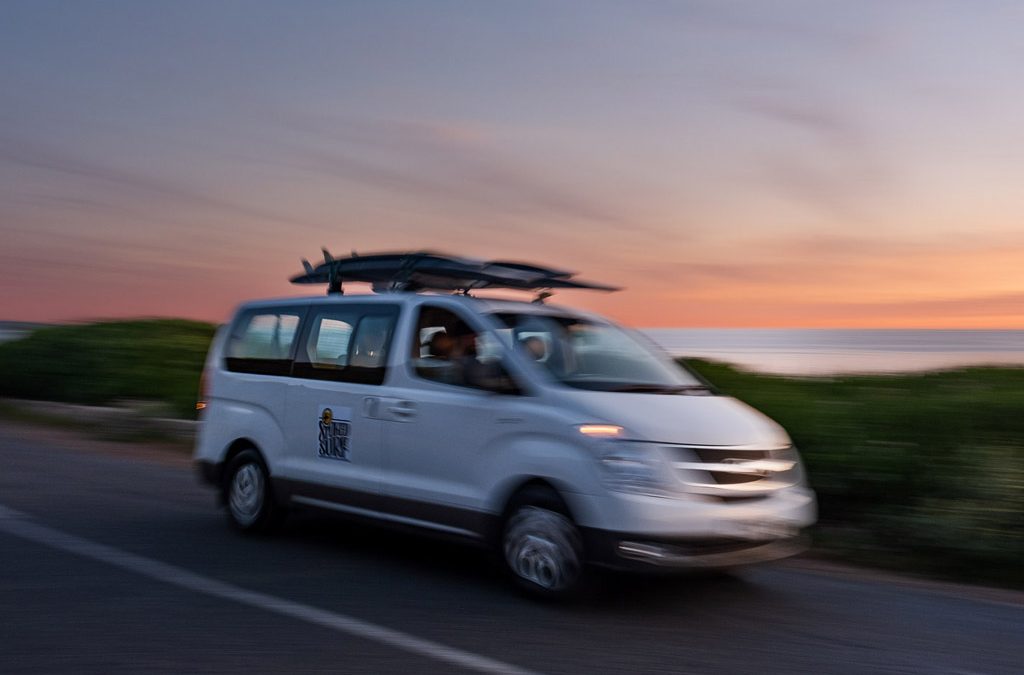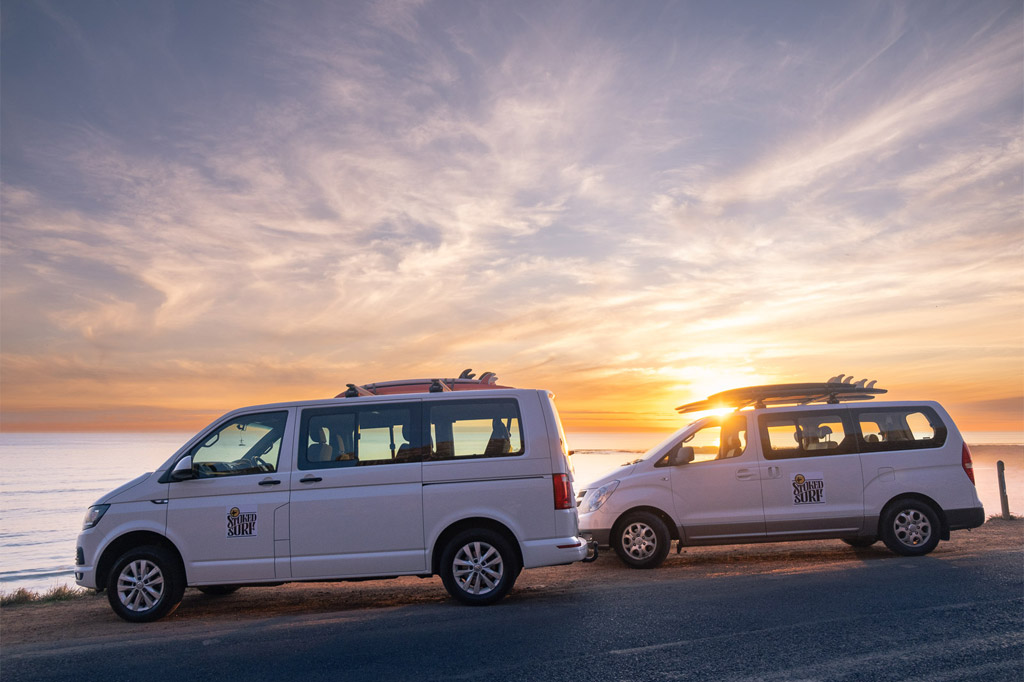If you are looking to keep yourself busy after you enjoyed your stoked surfing lessons, Blouberg is truly the place to explore, filled with exciting and exhilarating activities.
Whether you’re a tourist or a local from Cape Town and want to continue having fun in the magnificent Mother City, then make your way to Blouberg and enjoy the amazing views and activities that await you.
Get to Know Blouberg a Bit
Did you know that Robben Island is situated approximately 7 km off the coastline from Bloubergstrand? This famous location is where South Africa’s first black president, Nelson Rolihlahla Mandela, was imprisoned for 27 years fighting for freedom for his fellow South- Africans. The island is also known as one of the most popular tourist attractions in South Africa and is one of South Africa’s National Heritage Sites.
That’s not all, Blouberg is well-known for its restaurants and fun activities that are perfect for the whole family to enjoy. Take part in activities like kite surfing, Stand Up Paddle boarding (SUP), and Paramotoring for those explorers that like to have fun in the water.
For the more relaxed and romantic type, Blouberg serves the most beautiful sunsets and scenery for beach-walks with your partner. There are unending ocean views to gaze over and reminisce with your loved ones or you can watch the waves break into the rocks, whilst enjoying FrozenYO from the Famous Yoghurt Truck on the Blouberg Shoreline.
Blouberg also brings shopping convenience to your doorstep with places like Eden On the Bay Mall, the shopping centre that seems to have it all. Here you can find 14 different boutiques, health and beauty places, restaurants and café, picnic spots, and coffee shops. The mall is also pet-friendly so you may bring your furry friends along for a day out and about.
Let’s have a look at the surrounding places in and around Blouberg that can keep your wild and adventurous spirit happy.
Places to Visit in Blouberg
Blouberg is as magical as its surroundings, located on the shores of Table View, this picture-perfect landmark is surrounded by the most popular suburbs in Cape Town.
Here is a break-down of the nearby places and what you can do in and around the area.
Food
Ons Huisie
One of Cape Town’s top-rated restaurants, Ons Huisie (Our Small Home) is a popular eatery located in Bloubergstrand and offers an ocean view while having breakfast, lunch, or dinner.
Ons Huisie is also an internationally recognised heritage site. The restaurant is pet friendly, provides traditional West Coast cuisine, and provides an amazing view of Robben Island and the Atlantic Ocean.
Blue Peter
The Lighthouse restaurant (more commonly known as Blue Peter), the restaurant/hotel is a must-visit for something to eat and drink in Blouberg.
On the lower deck, the establishment has a pub-style, relaxed atmosphere, whereas the top has a more classic atmosphere to really wine and dine.
Shopping & Other Entertainment
Bayside Mall
If you’re a bit tired of being out and about in the sun, Bayside Mall is a great option to visit. Located in the heart of Blouberg, the Bayside Mall offers a variety of services and entertainment including clothing stores, restaurants, cafés, eight cinemas, and a food court.
You’ll also be able to stock up on healthy requirements at specialised shops or spoil yourself (or a loved one) at the mall’s jewellery stores.
Killarney Motor Racing Complex
If you want more of an adrenaline rush after you have finished your stoked surfing lesson, then Killarney Motor Racing Complex must be included on your to-do list.
Grab a few friends and race around on Killarney’s race track in a Formula One car. If that is not enough, you get training experience to upskill yourself and have a head-to-head race with your personalised number plate against others.
Here you can watch races including stock cars, drag racing, karting, super motards, and motocross.
Studio 46
More of the artsy type? Then you’ll love Studio 46. Here you can expect to find an exhibition of work done by local artists including painters, crafters, sculptures, photographers, and jewellery designers.
Beach Side
Dolphin Beach
Located in Table View, Blouberg, Dolphin Beach is about 20 minutes away from the city centre. The beach is a popular hangout because of its wind conditions that are perfect for watersports like kite surfing.
Dolphin beach also offers a breathtaking view of Table Mountain, so remember to have your camera on hand when exploring the area.
Big Bay & Little Bay
Big Bay Beach is divided into two beaches, Big Bay and Little Bay, by a rocky point. The beach is mostly known for its awesome watersports fun including surfing, wind-surfing, and kite surfing, attracting hundreds of people from all over. The area constantly hosts annual competitions where men and women from the watersports community participate for excited spectators.
When you’re on the beach, you have plenty of room to explore the stretches of sand as well as a beautiful view of Table Mountain. As you already know, the water at Big Bay is chilly but remains a hotspot for creating great memories with friends, family, and partners.
The beachfront is filled with a variety of dining options and shops where you’ll be able to wine and dine with a spectacular Cape Town sunset.
Some popular places include:
-
Moyo – Popular for its amazing cocktails and artsy face painting.
-
Eden on the Bay – This is another popular spot located within Big Bay filled with lovely restaurants (including Moyo), Eden Café Restaurant (great for a quick brunch), and Primi (perfect if you love pizza or pasta).
-
The Big Bay Waffle Company– Here you’ll find the best Belgian waffles in SA.
Nature
Blaauwberg Nature Reserve
A nature lover? The Blaauweberg Nature Reserve (BBNR) is a great place to explore Cape Town’s beautiful natural elements as well as other historical and cultural sights.
The nature reserve’s vision is to protect the unique diversity of the natural, cultural, historical resources available in the area to ensure present and future generations are able to enjoy it as well.
SANCCOB Seabird Rehabilitation Centre
The Seabird Rehabilitation Centre is a non-profit organisation whose main focus is to help ensure there isn’t a decline in Africa’s seabird populations. They rescue, rehabilitate, and release injured, oiled, and abandoned seabirds, including the endangered African penguin.
Blouberg with its surroundings is filled with various activities and sights that can keep the entire family busy and entertained. You can have loads of fun after you stoked surfing experience anywhere in Blouberg.
Learn to Surf
Come and share our passion for surfing by booking your surf lesson (or surf camp) with Stoked School of Surf. We’ll ensure you know your way around the board and the beautiful Cape Town waters. Get in touch to book your lesson or browse our blog to read up on surfing!



















